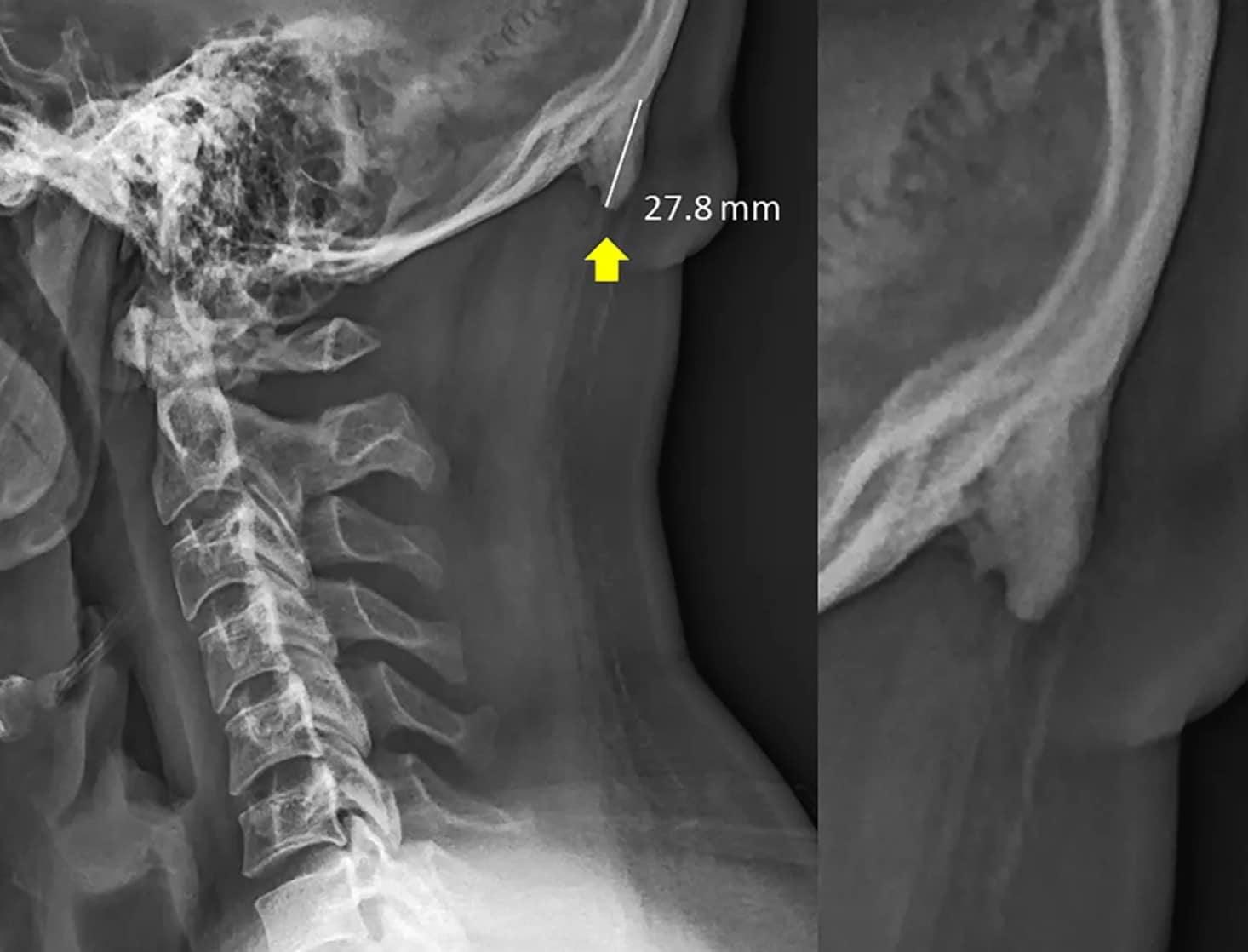In brief: Researchers at the University of the Sunshine Coast in Queensland, Australia, have come up with an intriguing discovering that has to do with bone growth in skulls of younger adults (aged 18-30) which they say is due to a shifting body posture resulting from excessive phone usage. They also claim their study to be the first documentation of a human body physiologically adapting to modern technology in everyday life.
David Shahar and Mark Sayers of the University of Queensland, Australia, have conducted startling research that suggests how bodies of young people are adapting to the use of modern technology. A phenomenon that has not only affected us mentally but now seems to remold our physical bodies as well.
As heads tilt forward with eyes glued to mobile screens, weight shifts from the spine to the muscles at the back of the head. This causes bone spurs in the connecting tendons and ligaments and is similar to how the skin thickens into a callus in response to pressure or chafing. "The result is a hook or hornlike feature jutting out from the skill, just above the neck," reports The Washington Post.
The researchers say that the posture resulting from excessively using smartphones is to blame for the bone-deep changes in the body. Their study has been published in Nature's open-access Scientific Reports Journal.
"We hypothesize EEOP [enlarged external occipital protuberance] may be linked to sustained aberrant postures associated with the emergence and extensive use of hand-held contemporary technologies, such as smartphones and tablets."
David, a chiropractor by profession who has recently completed a PhD in biomechanics, told the news outlet that describing the bone spur was up to anyone's imagination. "You may say it looks like a bird's beak, a horn, a hook." He further noted the size of the bone spurs, which observed at around 28 millimeters in length, were considerably larger than the 10 millimeter minimum value they've set to factor into the research.
David's supervisor and paper co-author Mark Sayers, an associate professor of biomechanics at Sunshine Coast, said that the danger was not the head horn itself but it was "portent of something nasty going on elsewhere, a sign that the head and neck are not in the proper configuration,".
In the past, external occipital protuberance (EOP) was usually attributed to older people suffering from prolonged strain, but the researchers observe that these hornlike structures appeared on X-rays of younger subjects, including those showing no obvious symptoms, revealing how the condition is now more frequent among youth, owing to their smartphone addiction.
The study did find its critics though. "Without knowing about the cell phone use of any of the people whose head X-rays were analyzed, it is impossible to draw conclusions about correlation between cell phone use and skull morphology," said Micheal Nitabach, a professor of physiology, genetics and neuroscience at Yale University.
According to Sayers, renouncing technology isn't the solution. "What we need are coping mechanisms that reflect how important technology has become in our lives," he says. David also stresses on the importance of correct posture and being disciplined in maintaining it.
To check if you might have turned sinister, he suggests reaching a hand around the lower rear of the skull to feel for any hornlike growth. Chances are that those who have one can probably feel it, too.
